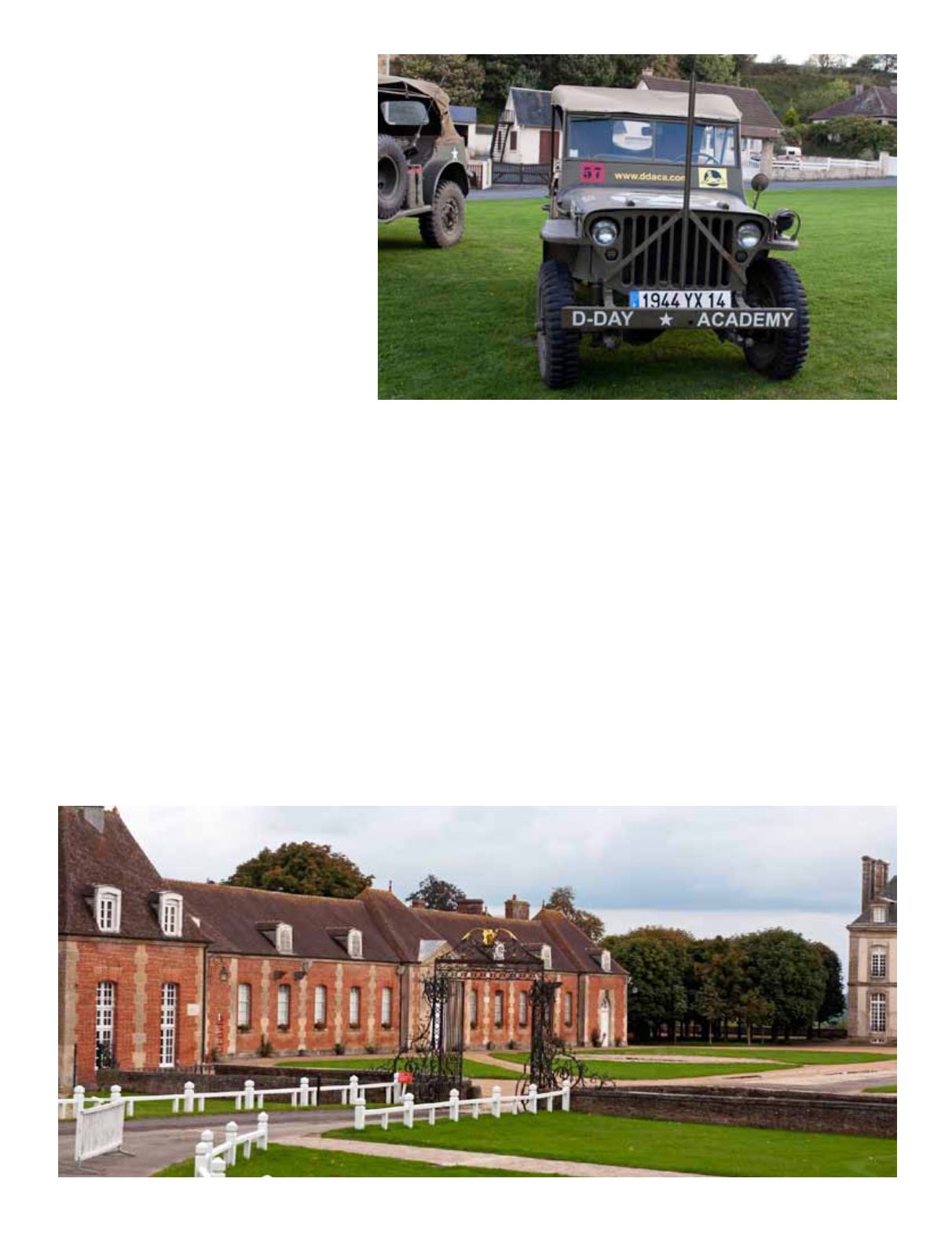
162 SIDELINES MARCH 2014
FOR HORSE PEOPLE • ABOUT HORSE PEOPLE
the Germans in World War II until the British
liberated it in June of 1944. Following the war,
it was used as a school and a summer camp
for children. It has been a hotel since 1984.
The view from my second floor corner room
was lovely and looked out over the countryside
through a window that unlatched and swung
open.
Though we did not have time during our stay
in Bayeux to do any sightseeing, the guidebooks
say that the Bayeux tapestry (commemorating
William the Conqueror’s victory at the Battle
of Hastings) and the Bayeux cathedral are two
must-sees in this town.
Day 3 – Mont St-Michel and the French State
Stud at du Pin
It was a grey, rainy morning when we left the
beautiful Chateau de Sully behind and drove
southwest toward the iconic island abbey of
Mont St-Michel. As we drove down the highway,
the rain started to let up and we saw several
rainbows, perhaps a precursor to our first stunning view of the
abbey. Mont St-Michel Abbey was built over 1200 years ago by
the bishop of Avranches when legend has it the Archangel Saint
Michael instructed him to “build here and build high.” Today, five
monks and two nuns still inhabit the cloister along with around
30 people in the village below. Even though Mont St-Michel is a
busy tourist attraction, it truly is an amazing sight and one you
should not miss. The Games’ endurance race will begin in the
village of Sartilly near the island and their course will run within
sight of the abbey and village.
We had lunch at Manoir Roche Torin, a smaller chateau
across the bay from Mont St-Michel. We could see the island
from our luncheon table. Many sheep were grazing the salt
grasses near the Bay of Mont St. Michel. The meat from the
sheep is said to be naturally salty and is considered a local
delicacy.
After lunch, we headed two-and-a-half hours east from Mont
St-Michel to the Le Domaine du Pin Avec (the Le Pin estate),
which houses the Le Haras National du Pin (Haras is French for
stud farm – the Le Pin French National Stud). This is where the
dressage and cross-country phases of the eventing discipline
will take place during the Games. Le Pin is one of a dozen or
so French National Studs. There is also another national stud in
Normandy at St-Lô.
The buildings and grounds at Le Pin are spectacular and I
can’t wait to photograph the competition there. Le Pin is also
an attraction unto itself with a museum complete with hands-
on activities for children, guided tours of the stables, horse
training exhibitions, tack room and carriage houses to view and
a working blacksmith forge. They also have a huge gift shop
with many tempting items. At Le Pin they breed Percherons,
Arabians, Selle Francais, French Trotters and Cobs and they
also have a Barb stallion in residence that was a gift from the
King of Morocco. After a tour of the stables, we had hot drinks in
the Le Pin Chateau and a surprise visit from Norman, the mascot
of the Alltech FEI World Equestrian Games 2014. For more
information on Haras du Pin, go to
.
com.
The bus returned us to Caen for our final evening where
we shared laughs and stories of our three-day “sample” of
Normandy over dinner. The experience left me eager to return for
the chance to visit more of the region and to cover the sure-to-be
exciting competition of the Games later this year.
D-Day Willis Jeep at
Normandy Beaches
Le Pin French National Stud
Continued on page 164


